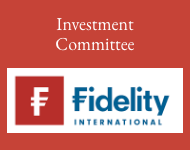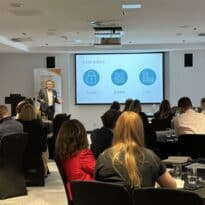Resilience is the word that comes to mind when I think of UK smaller companies. Battered, bruised, beaten – they always seem to pass the test with flying colours, but the past couple of years have been particularly unkind. Rising interest rates made it more expensive for smaller companies to borrow to finance their growth.
2022 saw the average Investment Association UK Smaller Companies fund shedding a quarter of its value (25.2 per cent); while last year was largely flat (0.5 per cent)*, as the headwinds continued to put pressure on an already unloved asset class. This year has been kinder, the average fund is up 8.3 per cent (vs. 7.5 per cent for the FTSE 100)* – inflation has fallen (rate cuts do not seem too far away), M&A activity is on the rise and – perhaps most importantly of all – valuations look compelling, both versus their large-cap peers and their own history.
But this is not just a UK story, smaller companies across the globe are also out of favour to varying degrees. There are also plenty of benefits to taking a global approach. A UK smaller company is likely to be far smaller than a US smaller company, for example. Equally, each region will have its own idiosyncratic qualities. In Japan, the smaller companies sector has a tilt to industrial companies, sophisticated technology and financials. European smaller companies are more exposed to the lending intentions of its domestic banks. Yes, the UK is the standout on valuation, but the breadth of opportunity globally is too big to ignore.
The proof is in the numbers. The MSCI World Small Cap index has delivered an average annual return since 2000 of 8.95 per cent, compared with 6.89 per cent for the MSCI All Companies World Index**. Smaller companies, regardless of geography, remain under-researched, which opens up opportunities for active stock pickers to find compelling investment ideas. And, of course, smaller companies are renowned for their growth prospects and potential for long-term returns. By investing in smaller companies today, investors may be investing into tomorrow’s larger companies. They also account for two thirds (68 per cent of all listed companies globally)***.
Why now versus waiting?
That 68 per cent figure is significant when you consider that on a recent catch-up I had with Global Smaller Companies Trust (GSCT) manager Nish Patel he told me that global smaller companies normally account for 7-8 per cent of the global stock market valuation, but recent underperformance has seen this fall closer to 4 per cent, a 50-year valuation low****. Nish says this has historically been the threshold point at which we see a turn in the cycle where smaller companies start to perform better for a prolonged period.
Nish points to a trio of reasons for global smaller companies coming back into favour. The first is that large-caps have delivered such strong growth that it will be hard to replicate – while those strong returns will also attract further competition and impact margins; the second is the increased share buybacks we are seeing within the small-caps universe, which indicate many business owners feel their own companies are now attractively valued, something which is also resulting in an uptick in M&A activity.
But it is the third of these which is perhaps the most indicative. Clearly rising rates has been a challenge for small-caps, while cutting rates will ease the pain. We’ve already seen Europe and Canada cut rates – with others set to follow. In previous rate cycles, the average small-cap has outperformed large caps by over 10 per cent in the following 12 months (26.6 per cent vs.15.6 per cent)****.
Opportunities to tap into attractive companies in major global themes
Kirsty Desson, manager of the abrdn Global Smaller Companies fund, has discovered a rich seam in three broad areas where she has seen the fund’s holdings outperform early in 2024: structural changes in the energy market; infrastructure spending and diversified financial stocks.
With investment opportunities across digital infrastructure, renewable energy, healthcare and airport sectors, infrastructure, in particular, benefiting from strong global thematics. The total global requirement for infrastructure investment is estimated at $97 trillion by 2040^, with the greatest demand being in emerging markets. Whether as a result of climate change or simply due to lack of investment, governments and corporates around the world are upgrading ageing infrastructure.
Kirsty invests in small-caps Johns Lyng, an Australian contractor supplier for insurance repairs, and Napco, a US provider of communication equipment and locking systems^^, both of which are benefiting as a result, she says.
Baillie Gifford Global Discovery fund is another global small-cap fund which seeks out the most innovative and fast-growing smaller companies in the world.
Richie Vernon, investment specialist at Baillie Gifford, says some of the most exciting opportunities in the fund are companies transforming healthcare (which currently accounts for 44 per cent of the fund)^^^. After a tough 2023, where the sector lagged the broader indices by the widest margin since 1999, the outlook for 2024 is much more favourable. A good example is Oxford Nanopore Technologies, which the fund invests in^^^. It is helping bring down the cost of genomic sequencing, democratising the technology and unlocking its wider use in clinical practice, creating a new era of deeply personalised genetic medicine.
Nish Patel is currently finding opportunities across three segments in GSCT, namely quality business which can grow reliably; cyclicals with low expectations (where the downside is protected by existing low valuations); and commodity-related businesses.
A good cyclical opportunity is Bodycote****, a provider of heat treatment services and specialist thermal processes. They strengthen metal structures that go into a variety of different applications. For example, Rolls Royce will send their aircraft engine blades to Bodycote to be heat treated – so they can withstand the pressures of being 20,000ft in the air.
Smaller companies have traditionally outperformed their larger counterparts over the longer term – they have also been the place to be in a recovery. With a hard landing (likely) avoided, rates cuts pending and plenty of valuations opportunities. Now may just be a great time to look at the asset class.
Beyond these three specialists vehicles already mentioned in the global smaller companies space, investors may want to consider the likes of the WS Montanaro Better World fund, a global equities fund looking for medium and small-sized businesses whose products or services are making a positive impact on the world. Another to consider is IFSL Marlborough Global Innovators fund, which has a heavy weight to technology firms, but it will invest in innovative disruptive companies from any sector. Both have a strong allocation to small-caps across the globe^^^.
*Source: FE Analytics, discrete calendar performance in pounds sterling, at 16 June 2024
**Source: MSCI index factsheet, 29 December 2023
***Source: Stocks in MSCI ACWI Small Cap as a percentage of stocks in MSCI ACWI Small Cap and MSCI ACWI. As at 31 January 2024.
****Source: GSCT, June 2024
^Source: Global Infrastructure Hub, 25 July 2017
^^Source: abrdn, June 2024
^^^Source: fund factsheet, 31 May 2024
Past performance is not a reliable guide to future returns. You may not get back the amount originally invested, and tax rules can change over time. Darius’s views are his own and do not constitute financial advice.
Main image: rodeo-project-management-software-ONe-snuCaqQ-unsplash































